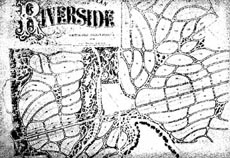index
Railroad suburbs with design
click on images for full-size:


The Olmstead plan for Riverside. There is a proposed modern update of the plan.
The designers of Riverside, perhaps the first modern suburb, were Fredrick Law Olmstead and Calvert Vaux, perhaps most famous for their work with New York's Central Park.
Perhaps the strongest influence on the development of suburbs was a desire widespread in American society to maintain traditional preindustrial values and environments. It was this impetus that most directly affected the physical character of the planned suburban communities built between the middle of the nineteenth century and the Second World War. Typically, these suburbs attempted to synthesize two distinct preindustrial environments: the artisan's village and the open countryside. The merger of these two patterns had the positive effect of creating a rich and visually varied environment comparable to the texture of the surrounded urban areas. Because each new suburb was created as an entirely new and large-scale entity, it required professional planning., which had hitherto been reserved for the design of cities and large-scale landscapes. Ironically, these trained professional planners who undertook the design of such new communities for the most part employed naturalistic plans and vernacular architecture to create the illusion of country villages set in picture-perfect landscapes that had developed organically over long periods of time. Stern 1986, 126-7